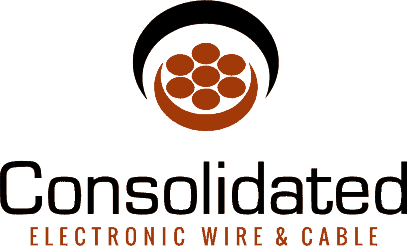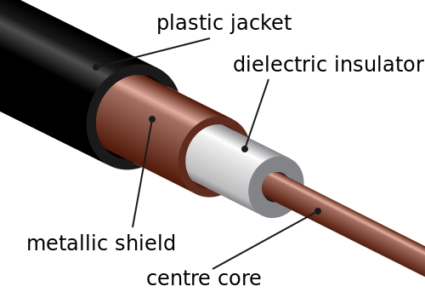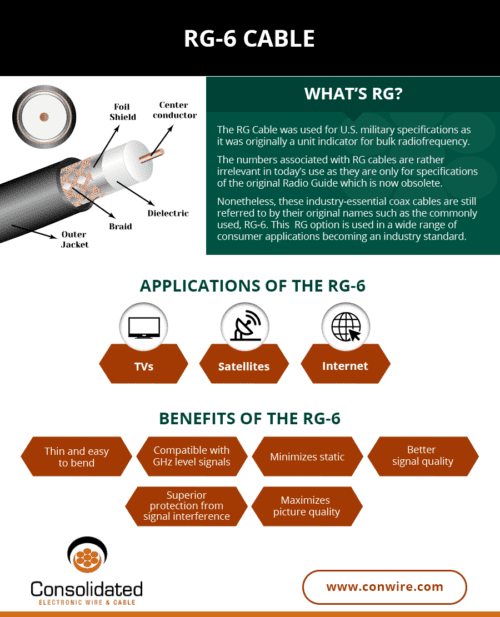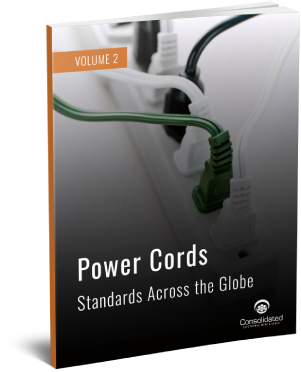Coaxial cables have been used for decades with applications like commercial radio and cable television by providing high-frequency signal transmission.
Invented by Oliver Heaviside, coaxial cables are electrical copper-based wire cables with inner conductors surrounded by a tubular insulating layer then wrapped together by a metallic shield and often a synthetic outer jacket, as well.
The name “coaxial” came about from the inner conductor and outer shield sharing one geometric axis.
What makes these coax cables unique among other shielded cables is the ability to function as transmission lines by controlled cable dimensions with constant conductor spacing.
Coax cables are default cables of their type and are compatible with most daily use electronics. Although there are a handful of coaxial cables, a frequently appearing cable type in a home and residential settings is the RG-6 Cable.
What’s RG?
The RG Cable has come a long way and evolved in significance since its days of initial use. RG actually stands for “Radio Guide” and derives from World War II, The RG Cable was used for U.S. military specifications as it was originally a unit indicator for bulk radio frequency.
This explains why the cables are associated with numerical values as each type of coaxial cable had a different RG rating with distinct characteristics and specifications. If the RG cable was also designated with a “U,” it meant “universal” or for general utility use.
The numbers associated with RG cables are rather irrelevant in today’s use as they are only for specifications of the original Radio Guide which is now obsolete.
Nonetheless, these industry-essential coax cables are still referred to by their original names such as the commonly used, RG-6. This RG option is used in a wide range of consumer applications becoming an industry standard.
The RG-6
The RG-6 is primarily used for cable and satellite signal transmission for residential or commercial installations.
This coax cable is thin and easy to bend for wall or ceiling installations and remains the preferred choice to relay cable television signals.
The cable has a large conductor, which provides better signal quality and also has a thicker dielectric insulation making it less likely to carry damaging electric currents.
The RG-6 coax cable uses better shielding which makes it compatible with GHz level signals and provides superior protection from signal interference.
Of course, there are still other RG cables relevant in today’s industry like the RG-11, intended mostly to run outside or underground, and the RG-59, known to work for low-frequency transmissions. However, the RG-6 has become the standard and replaced other coaxial cables in recent years.
These sorts of coaxial cables have now become ubiquitous in cable installations and can work with various electronic systems. The RG-6 cables are also known to be relatively affordable for their use and compatibility.
For more information about Consolidated‘s standard and custom coaxial cable solutions, please contact an expert today.




 () Quote Cart
() Quote Cart





